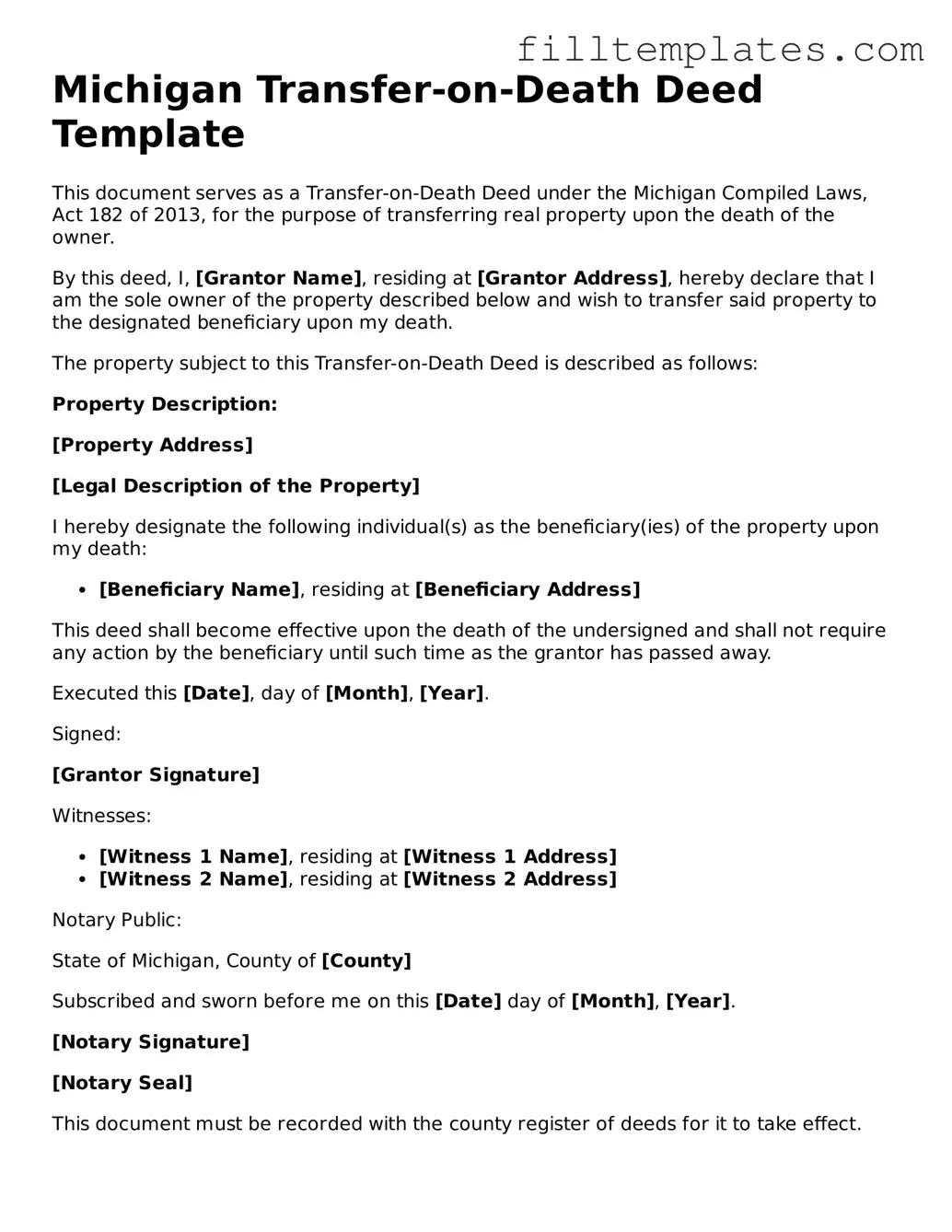Michigan Transfer-on-Death Deed Template
This document serves as a Transfer-on-Death Deed under the Michigan Compiled Laws, Act 182 of 2013, for the purpose of transferring real property upon the death of the owner.
By this deed, I, [Grantor Name], residing at [Grantor Address], hereby declare that I am the sole owner of the property described below and wish to transfer said property to the designated beneficiary upon my death.
The property subject to this Transfer-on-Death Deed is described as follows:
Property Description:
[Property Address]
[Legal Description of the Property]
I hereby designate the following individual(s) as the beneficiary(ies) of the property upon my death:
- [Beneficiary Name], residing at [Beneficiary Address]
This deed shall become effective upon the death of the undersigned and shall not require any action by the beneficiary until such time as the grantor has passed away.
Executed this [Date], day of [Month], [Year].
Signed:
[Grantor Signature]
Witnesses:
- [Witness 1 Name], residing at [Witness 1 Address]
- [Witness 2 Name], residing at [Witness 2 Address]
Notary Public:
State of Michigan, County of [County]
Subscribed and sworn before me on this [Date] day of [Month], [Year].
[Notary Signature]
[Notary Seal]
This document must be recorded with the county register of deeds for it to take effect.
